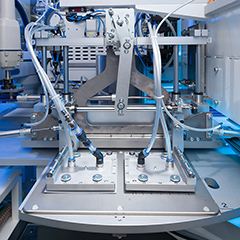The Russian module manufacturer and PV project developer Hevel LLC, based in Moscow, specializes in solar modules manufacturing with heterojunction (HJT) cells. In order to expand production of its high-efficiency modules, Hevel ordered new stringer systems, including layup, from German specialist teamtechnik. This change to teamtechnik is the result of a successful series of tests carried out beforehand. These showed that teamtechnik’s adhesive technology would reduce costs and improve the reliability of the modules.
Hevel manufactures its modules in Novocheboksarsk in the southern Volga region and was formerly active in thin-film technology. The cell and module manufacturer achieved the changeover to the sensitive HJT cells, with thicknesses less than 150µ, in record time. Hevel’s specialists from its own R&D center developed their HJT technology using existing knowledge from thin-film solar module production. Next, the company placed orders for two Stringer TT1600 ECA units with the German production system specialist teamtechnik in order to increase production from 160 MW to 250 MW. These systems use innovative adhesive technology to connect HJT cells reliably in series production at low process temperatures. Verified modules that were produced in preliminary tests on teamtechnik stringers and then tested in a climate-control chamber demonstrated higher efficiency and stabler electrical parameters. The layup system, also ordered from teamtechnik, is matched precisely to the high cyclic output of the two stringers and provides additional process reliability. Elena Bodnarchuk, Deputy CEO of Hevel LLC, says: ‘The deal with teamtechnik is a logic step in implementing our strategy to develop a new branch of PV technology. Additionally, this system makes us more flexible in regard to module design, material selection and material combinations. This will enable us to make our own developments in future, with a high potential for further reducing costs while also increasing quality and efficiency.’


























